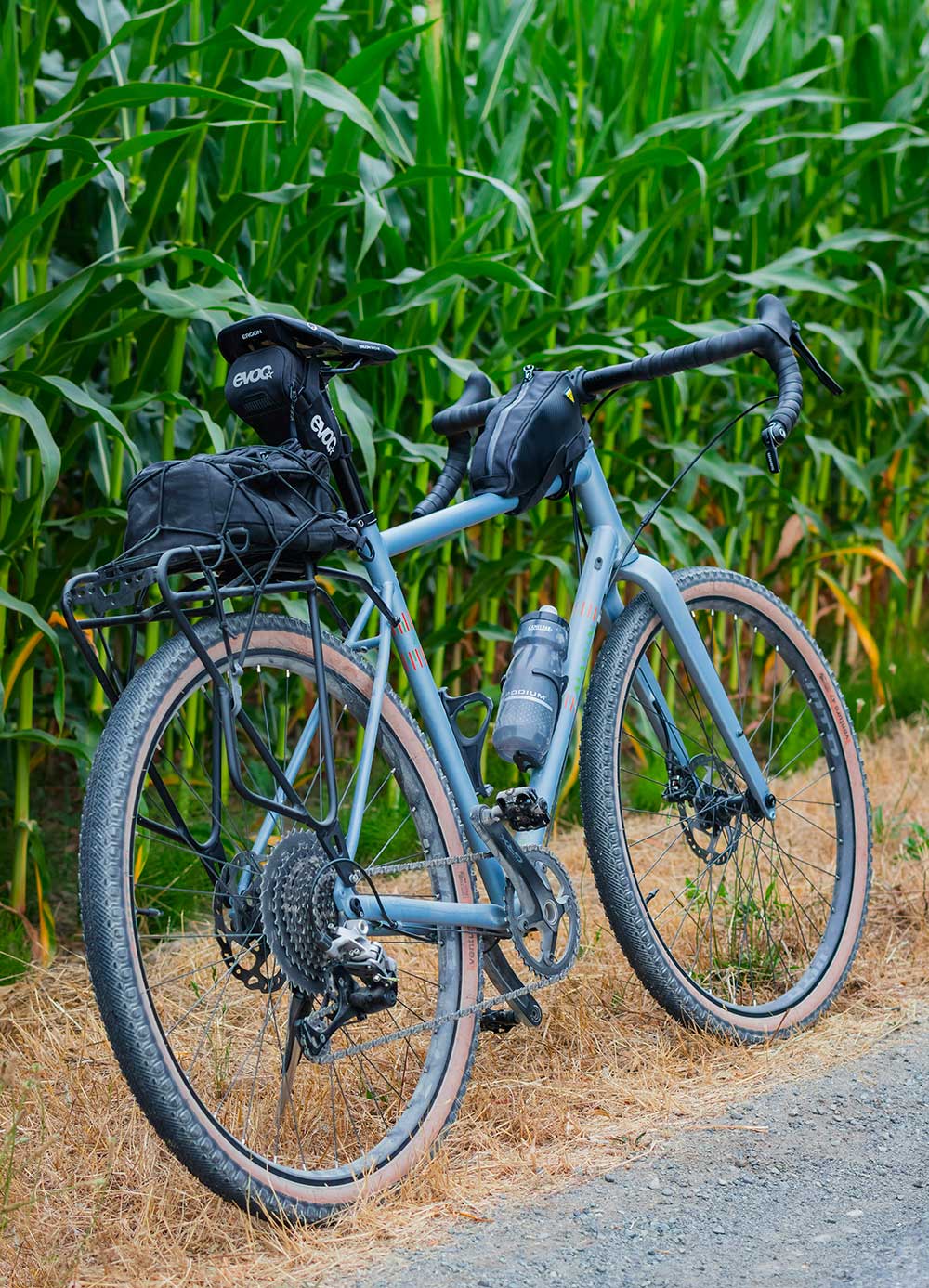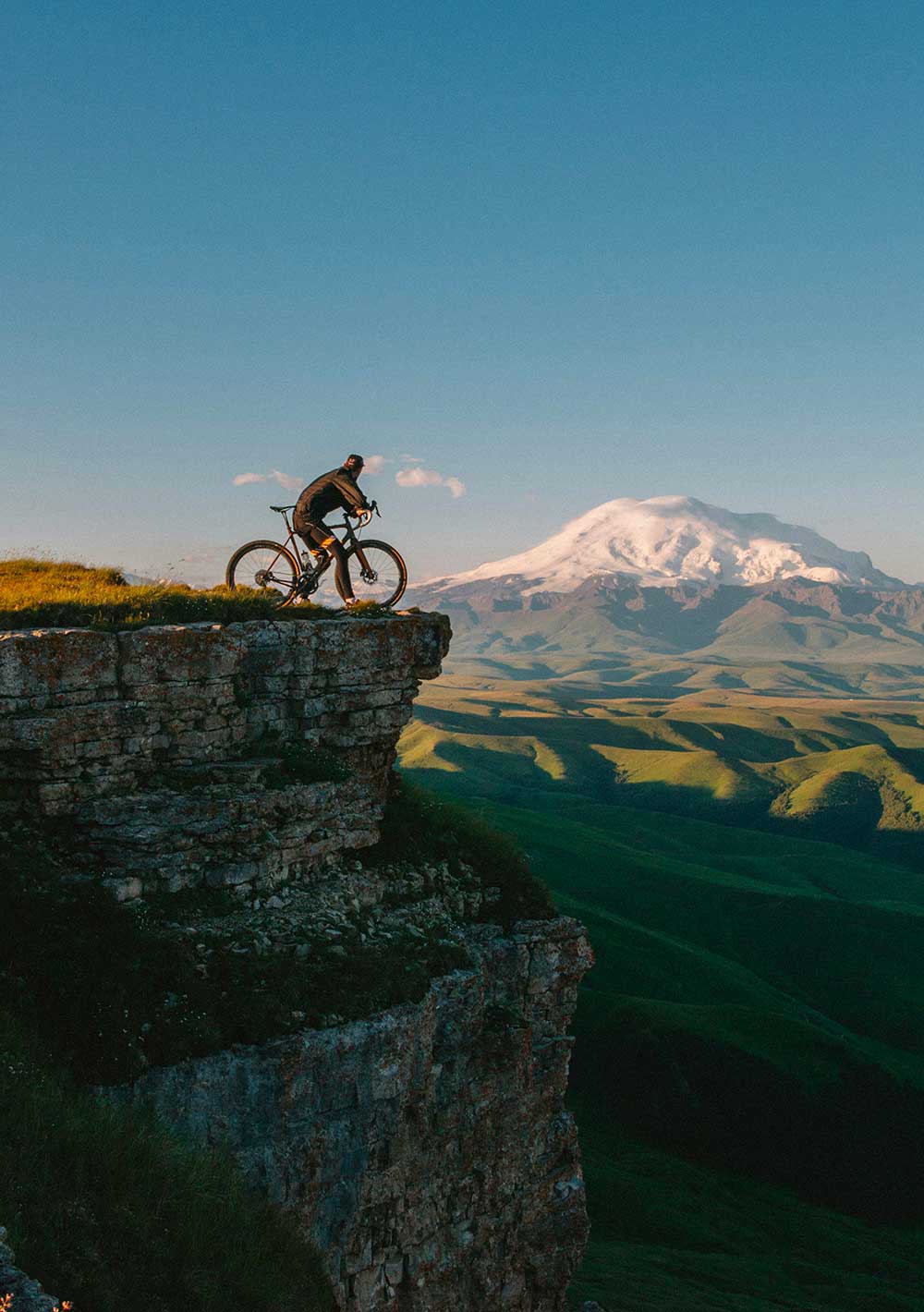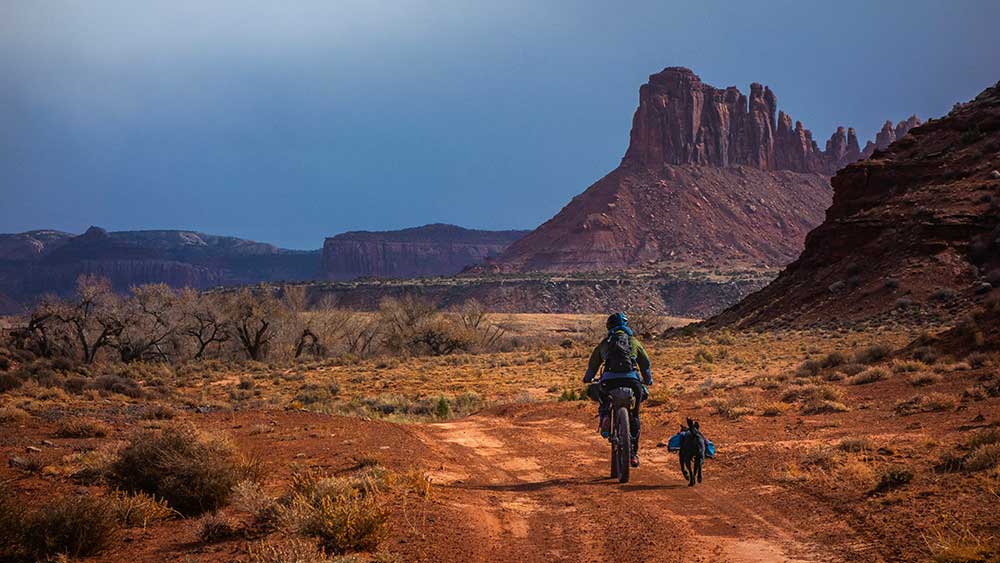Gravel bikes often find themselves in the crosshairs of debate, with some saying they’re jack-of-all-trades but masters of none.
Critics might toss around quips like,
“They’re just 90’s mountain bikes in disguise” or “Why not just get a modern hardtail?”
Sure, there’s a kernel of truth there, but it’s like saying a Swiss Army knife isn’t as good as a chef’s knife—it’s missing the bigger picture.
Let’s set the record straight: the gravel bike scene is as diverse as a music festival lineup. From road bikes beefed up with a smidge more tyre room to mountain bikes that decided drop handlebars weren’t just for the roadies, gravel bikes are the chameleons of the cycling world.
Their superpower? Versatility.
Sure, you can take a road bike on a gravel path or a mountain bike on the highway, but it’s like wearing flip-flops to a hike—doable, but not ideal.
Gravel bikes smooth over those rough spots. They might not out-climb a mountain goat (a.k.a. a mountain bike) on rocky paths or zip through the tarmac like a road bike with a tailwind, but they strike a sweet middle ground.
And here’s where it gets spicy: with just a quick swap of wheels and tyres, a gravel bike can adapt faster than a chameleon. Craving speed on silky roads and gentle gravel? Slap on a set of 700C wheels with sleek tyres, and you’re slicing through the air.
Feeling adventurous and want to tackle some trails or singletrack?
A 650b wheel decked out with knobby tyres will have you rolling smoothly over bumps and grooves.
In a world where the average Joe and Jane are swapping out their specialized rides for gravel bikes, sales stats are soaring. The gravel bike market is booming, with a whopping increase in sales year over year, proving that these versatile steeds, equipped with components like Shimano, aren’t just a passing fad but a mainstay in the cycling community. So, while the purists might debate, gravel bikes are out there turning skeptics into believers, one adaptable ride at gravel roads and singletrack at a time.
Understanding Gravel Bikes

What Is a Gravel Bike?
When we talk about cycling, the term “gravel bike” might seem like just another category to add to the list. But what exactly sets it apart from its cousins, the road and mountain bikes?
At its core, a gravel bike is designed to be the Swiss Army knife of bicycles, capable of tackling a wide range of terrains with ease.
What makes it stand out is its unique blend of features: wider tire clearance for those chunky, off-road tires; a brake system robust enough to handle high-speed descents on loose surfaces; and a frame geometry that offers both the comfort for long rides and the agility for technical trails.
It’s like someone took the best bits of road and mountain bikes, mixed them with the versatility of an xc bike, and created a hybrid that refuses to be pigeonholed.
What About The Geometry of Gravel Bike in Comparison to Mountain Bikes or Road Bikes ?

Gravel bikes, with their unique geometry, sit in a sweet spot between the aggressive stance of road bikes and the relaxed posture of mountain bikes. Picture a road bike: sleek, aerodynamic, built for speed with a forward-leaning position.
It’s like a sports car, low and fast, but not always the comfiest for long hauls or bumpy paths.
Now, think about mountain bikes: they’re the SUVs of the bike world, designed for comfort and stability with a more upright position, ready to tackle rough terrains but not the quickest on smooth roads.
Enter gravel bikes, the adventure-ready, do-it-all hybrids that blend these worlds.
Their geometry is a careful balance. Not as stretched out and low as road bikes, which helps reduce strain on your back and neck during long rides. Yet, they’re not as upright as mountain bikes, maintaining efficiency and speed, especially on flatter, smoother surfaces.
One key aspect of gravel bike geometry is the longer wheelbase compared to road bikes.
This gives you a stable and confident ride over loose surfaces, much like the stability you’d get from a mountain bike, but with a nod to the agility and responsiveness prized in road cycling.
The head tube angle is another critical feature—it’s slacker than a road bike’s, which improves handling on off-road descents, yet not as slack as most mountain bikes, preserving a good degree of nimbleness.
What’s really fascinating is how this geometry translates to bikepacking and adventure cycling. It means you can load up your gravel bike with gear without compromising its handling and ride quality too much, even on challenging gravel roads, thanks to advancements in suspension technology.
You’re getting a machine that’s versatile enough to handle long, loaded journeys over diverse terrains, bridging the gap between the swift, zippy feel of road cycling and the rugged, go-anywhere spirit of mountain biking.
So, in the grand scheme of things, gravel bikes offer a geometry that’s all about balance and versatility.
They invite you to explore beyond the tarmac without tying you down to the slow-going ruggedness of traditional mountain biking paths.
It’s like having a bike that speaks multiple languages, ready to adapt to whatever adventure you have in mind.
The Rise of Gravel Biking
The concept of riding off the beaten path isn’t new, but the gravel bike as we know it today started gaining traction in the early 2010s. This rise can be traced back to the grassroots of cyclocross races and the adventurous spirit of bike or cyclocross bike enthusiasts. bikepacking enthusiasts.
Cyclocross, with its off-road courses and need for versatile bikes, laid the foundation for the love gravel enthusiasts have today. Riders started tweaking their bikes to better suit long, mixed-terrain adventures, which led to the birth of the modern gravel bike. It wasn’t long before manufacturers caught on and began designing bikes specifically for this new category.
As gravel bikes carved out their niche, events like the Dirty Kanza (now known as Unbound Gravel) in the US began to rise in popularity, drawing in cyclists looking for a new kind of challenge.
- These aren’t just races; they’re adventures that push riders to their limits across hundreds of miles of gravel and dirt.
- The allure of exploring less-traveled paths and the freedom to ride almost anywhere has led to a burgeoning community of gravel enthusiasts.
- This segment of cycling has seen significant growth, with many embracing the gravel grind as not just a pastime but a lifestyle.

The Great Debate
Innovation or Marketing Genius?
You’ve probably heard the chatter on group rides or seen the debates light up online forums like Reddit and Quora, especially when it comes to comparing gravel bikes with mtb or road bikes.
“Are gravel bikes really a groundbreaking innovation or just a smart marketing move by the cycling industry?”
It’s a question that stirs up quite a bit of passion among cyclists.
- On one hand, you’ve got folks who swear that their gravel bike has transformed how they ride, offering a versatility that’s unmatched by traditional road or mountain bikes.
- On the other, skeptics argue that it’s all a bit of marketing magic, repackaging existing ideas to create a buzz. It’s a debate that’s as rugged as the terrain these bikes are meant to conquer!
The Rider’s Perspective
When you chat with riders who’ve embraced the gravel lifestyle, you hear some incredible stories.
They talk about the thrill of setting off on a gravel grinder, not knowing exactly what the day will bring but ready for any adventure.
For these enthusiasts, the gravel bike isn’t just another bike in the shed; it’s a ticket to freedom, an invitation to explore roads less traveled and reconnect with the pure joy of cycling.
Whether it’s the ability to switch from tarmac to trails without missing a beat, or the sheer fun of bikepacking across varied landscapes, gravel bikes have opened up a whole new world for many riders.

The Verdict
Analyzing the Stats
Diving into the statistics, the growth of the gravel bike segment is undeniable.
Sales figures from cycling industry reports highlight a significant uptick in gravel bike purchases, outpacing many traditional categories.
This surge isn’t just a flash in the pan; it’s been building steadily, reflecting a genuine interest and investment from both new and seasoned cyclists.
The numbers suggest that gravel bikes are more than a fleeting trend; they’ve carved out a substantial niche in the market, attracting riders with their promise of adventure and versatility.
Let me give you some numbers to back up this statement: gravel bikes are now equipped with flare in the handlebars for better control on gravel roads.
- Sales Growth:
- According to the NPD Group, sales of gravel bikes in the United States increased by 48% in 2020 compared to the previous year.
- The European market also saw significant growth, with a 37% increase in gravel bike sales in 2020 compared to 2019.
- Market Share:
- Gravel bikes accounted for 8% of total bike sales in the U.S. in 2020, up from 5% in 2019, indicating a growing market share for this category.
- In Europe, gravel bikes captured a 12% share of the total bike market in 2020, showing a similar trend of increasing popularity and demand.
- Google Trends:
- Google search interest in gravel bikes has been steadily increasing over the past few years, with a notable surge in searches related to gravel biking adventures, gear, and reviews.
- This sustained interest on a popular search platform like Google suggests a growing and engaged audience for gravel biking content and products.
- Industry Reports:
- Industry reports from organizations like the Bicycle Product Suppliers Association (BPSA) and the European Twowheel Retailers’ Association (ETRA) have highlighted the rise of gravel bikes as a significant trend shaping the cycling market.
- These reports often cite factors like versatility, comfort, and adventure appeal as driving forces behind the sustained popularity of gravel bikes.
By considering these specific numbers and statistics related to sales growth, market share, Google Trends data, and industry reports, it becomes evident that gravel bikes have established themselves as more than just a passing trend in the cycling industry.
Could Gravel Bikes Be Your BFFs for Bikepacking Bliss ?

I really think that Gravel Bikes can be precious allies for a great bikepacking experience !
Ever thought about turning your bike ride into a mini-vacation?
These bad boys aren’t just about eating up miles of mixed terrain; they’re like your ride-or-die friends, ready to carry your camping gear, snacks, and maybe even a cozy hammock for those starry nights.
Imagine this: you’re planning an epic weekend adventure, escaping the hustle and bustle, surrounded by nature.
That’s where gravel bikes come in, with their adventure-ready design. They’re like the Swiss Army knives in your cycling toolkit, kitted out with all the clever bits and bobs you need.
We’re talking mounts on the top tube for your munchies, fork mounts for extra gear, and even spots to hook up mudguards—because who likes a muddy backside, right?
And here’s where it gets cool: those wider handlebars aren’t just a fashion statement.
They’re your ticket to hassle-free packing, giving you loads of space to strap on a handlebar bag without turning your ride into a game of Tetris.
Plus, that slightly higher ride position? It’s not just about enjoying the view (though that’s a big plus). It also keeps your bags from playing kiss-chase with your front wheel, which is always a good thing.
But here’s the kicker: it’s not about turning your bike into a moving van. It’s about smart packing.
With all these nifty features, balancing your load is a breeze, which means you can ride more comfortably and enjoy the scenery instead of worrying about your gear.
So, whether you’re off on a wild adventure across rugged trails or a chill overnighter to clear your head, your gravel bike is ready to be your steadfast companion. Trust me, once you’ve tried bikepacking with a gravel bike, you’ll wonder how you ever did without it.
The Future of Gravel Biking
So, what does the future hold for gravel biking?
It’s looking incredibly bright. With each passing year, we’re seeing more innovation in gravel bike design, community events that bring riders together, and an ever-growing network of gravel routes worldwide.
This momentum doesn’t just show the staying power of gravel bikes; it points to a vibrant and inclusive cycling culture that’s eager to push boundaries and explore new horizons.
Gravel biking isn’t just about the bike; it’s about the spirit of adventure that it embodies, and that’s something that continues to resonate with riders everywhere.
Gravel Bikes Through My Eyes: More Than Just Hype
Hey, I get it. There’s a lot of buzz out there claiming gravel bikes are just the latest marketing craze.
But from where I stand, that’s not the whole story. These bikes aren’t just showroom eye candy; they’re answering a real call from folks like us who crave a bit of adventure.
Take events like Unbound Gravel in Kansas, for example. They’re not just races; they’re epic adventures that whisk you away to places most folks never see.
And in a world where every other headline is about distracted driving, the chance to pedal into the quiet unknown sounds pretty good, doesn’t it? That’s gravel biking for you—it’s about finding peace on the path less taken.
Sure, back in the day, we’d hack together whatever we could to tackle rougher rides—an old mountain bike here, a cyclocross there. It worked, sort of. But as more of us got hooked on gravel’s gritty charm, the bike world took notice.
Thinking back to my early days on two wheels, you basically had to choose: speedy road bike or tough mountain bike, with touring bikes as a distant third. Now, gravel bikes are shaking things up, mixing road speed, mountain resilience, and the load-hauling chops of a touring bike all in one.
So, here’s the deal: if a gravel bike doesn’t fit your vibe, no worries. It’s just another bike, right?
But for someone like me, who’s fallen head over heels for what these versatile rides offer, it’s not about following a trend. It’s about finding that perfect partner for adventures that call for a little bit of everything.
Trust me, once you’ve felt the freedom of a gravel bike, you’ll see it’s anything but a marketing ploy. It’s about answering the call of the wild road, with a big grin on your face, especially when you’re riding gravel.
You are more than welcome to share your own vision on the legitimacy of gravel bikes in the comment below…I am always happy to get your insight !



0 Comments